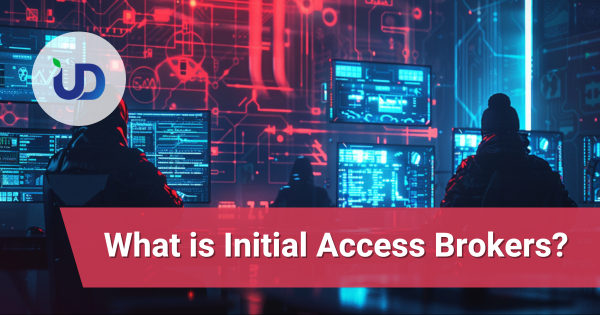Inside the Dark Web Economy: How Initial Access Brokers Sell Your Company’s Weaknesses
Modern cyberattacks rarely begin with a genius hacker breaking through firewalls in real time. Instead, many intrusions start with something far more structured and business-like: Initial Access Brokers (IABs). These actors quietly infiltrate corporate environments, establish reliable access, and then sell that access to the highest bidder. In today’s cybercrime ecosystem, IABs have become the “gatekeepers” of breaches—fueling ransomware, espionage, and large-scale data theft.
In this article, you’ll learn what Initial Access Brokers are, how they operate, why the underground market for corporate access is booming, and what your organization can do to defend against them.
What Are Initial Access Brokers?
Initial Access Brokers are cybercriminals who specialize in one thing: obtaining the very first foothold inside an organization’s systems.
They don’t usually carry out ransomware, data exfiltration, or financial fraud themselves. Instead, they gain access—via stolen credentials, vulnerabilities, or misconfigured systems—and then sell that access on marketplaces across the dark web.
Their “product” is incredibly valuable. A single set of credentials or a single vulnerable server can serve as the entry point for:
• Ransomware affiliates
• Advanced persistent threat (APT) groups
• Data theft operations
• Corporate espionage teams
This division of labor has transformed cybercrime into a scalable, profitable business model.
How Initial Access Brokers Operate
Initial Access Brokers follow surprisingly predictable workflows, and understanding them can help organizations identify early warning signs.
They begin by scanning the internet for exposed services, vulnerable VPN endpoints, forgotten cloud resources, or outdated systems.
Once a target is found, they attempt to exploit it—sometimes through automated systems, sometimes by purchasing stolen credentials.
If they successfully gain access, they stabilize it, often adding persistence mechanisms, secondary accounts, or backdoors to ensure reliability.
Only then do they list the access for sale on underground forums, complete with details such as the company’s revenue, geography, and permissions level available.
This process is efficient, repeatable, and optimized for profit. Many brokers act like legitimate salespeople—answering questions, offering discounts, and even providing “customer support” to criminals purchasing the access.
Why the IAB Market Is Growing So Fast
The demand for ready-made corporate access has surged, and several factors explain the explosive growth.
Ransomware gangs have shifted to an affiliate model, meaning they outsource initial infiltration to specialists.
Companies are more interconnected than ever, leaving countless digital doors open—cloud misconfigurations, exposed APIs, and legacy systems.
Credential theft is easier than ever due to phishing kits, infostealer malware, and credential stuffing automation.
And finally, the profit model is irresistible: IABs can earn thousands of dollars selling a single RDP login to a medium-sized company.
This combination of supply and demand has transformed IABs into the backbone of the global cybercrime supply chain.
What Access Is Being Sold?
Not all access is equal, and the price depends heavily on what kind of entry point the broker has obtained.
Common offerings include:
Compromised VPN or RDP credentials, often with domain privileges
Access to cloud accounts such as Azure, Google Workspace, or AWS IAM accounts
Vulnerable web apps, APIs, or misconfigured firewalls
Internal network access through exploited servers or IoT devices
Compromised email accounts with MFA-bypassed sessions
In many cases, the listings include screenshots, uptime guarantees, and assurances of exclusivity. The IAB market has become disturbingly professional.
How Your Company Becomes a Target Without Knowing It
Initial Access Brokers rarely focus on a specific company. Instead, they hunt vulnerabilities at scale.
Your business becomes a target the moment a scanner identifies a weak VPN gateway, a missing patch, or an exposed database.
You may never notice the initial intrusion because IABs avoid making noise—they avoid lateral movement, data theft, or file encryption.
Their goal is simple: remain invisible long enough to sell your access to someone else.
This is why many major breaches start with a compromised account that was sold weeks or months earlier on a dark web forum.
How to Protect Your Organization from Initial Access Brokers
Defending against IABs requires a mix of strong architecture, proactive monitoring, and frequent validation.
Start by implementing strict identity security.
This includes enforcing MFA, deploying privileged access management, and monitoring for abnormal login patterns across VPN, RDP, and cloud environments.
Next, harden your attack surface by eliminating exposed services, patching internet-facing systems quickly, and using Zero Trust network segmentation.
Additionally, deploy continuous monitoring tools such as log analytics, EDR, SIEM, and MDR services to catch early signs of illicit access.
Finally, schedule regular penetration testing and security risk assessments to validate assumptions and uncover weaknesses before attackers do.
Organizations that invest in foundational security hygiene drastically reduce their exposure to IAB activities.
Why MSSP and Advanced Threat Detection Matter More Than Ever
Because Initial Access Brokers specialize in stealth, many organizations only discover breaches after the payload is delivered—usually ransomware.
A managed security service provider (MSSP) or a specialized threat detection team can continuously watch for subtle indicators such as unusual remote logins, suspicious persistence attempts, or unexpected network changes.
This early detection capability can break the IAB supply chain.
If access is discovered and revoked before it’s sold, the entire attack collapses.
This is why outsourced monitoring, security architecture assessments, and regular pentesting have become critical components of modern defense.
Conclusion: Stop IABs Before Your Access Becomes a Commodity
The rise of Initial Access Brokers marks a major evolution in cybercrime.
Instead of targeting companies directly, attackers now buy ready-made access to corporate networks, much like a subscription service.
The best defense is visibility, strong identity controls, continuous monitoring, and frequent security validation through professional services like pentest, SRAA, and MSSP.
Organizations that treat security as an ongoing discipline—not a one-time project—are far better equipped to stay ahead of this fast-growing threat.
🛡️ Ready to Strengthen Your Security?
UD is a trusted Managed Security Service Provider (MSSP)
With 20+ years of experience, delivering solutions to 50,000+ enterprises
Offering Pentest, Vulnerability Scan, SRAA, and a full suite of cybersecurity services to protect modern businesses




